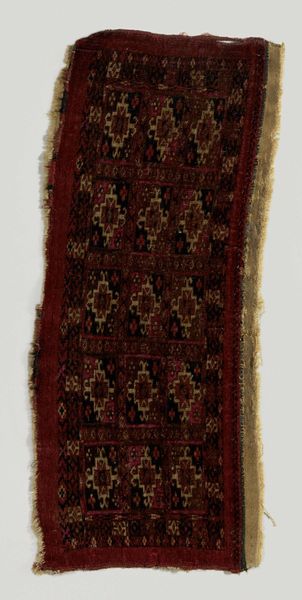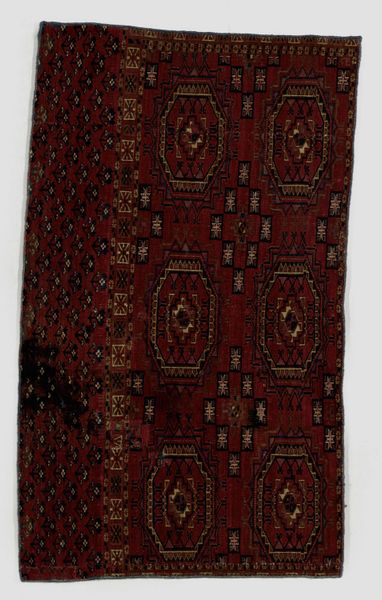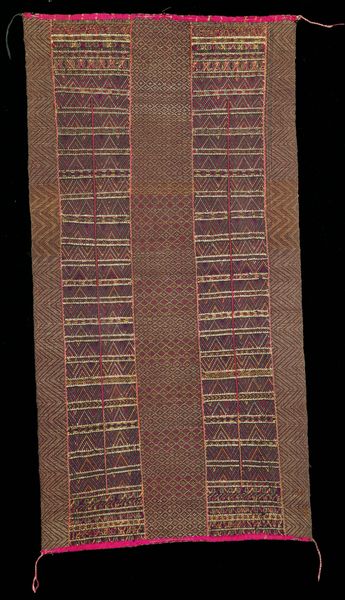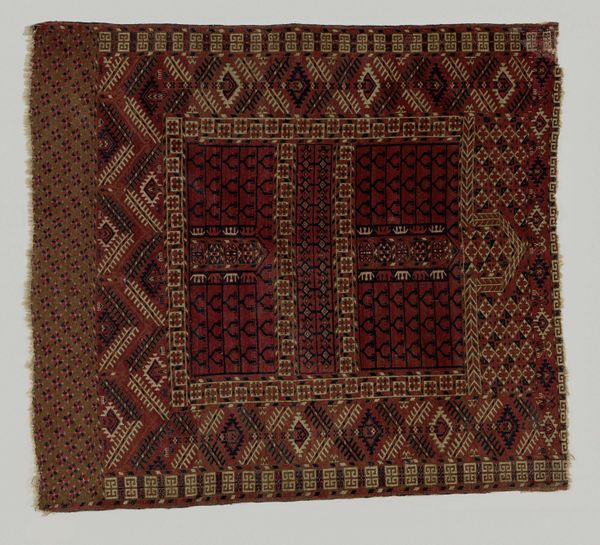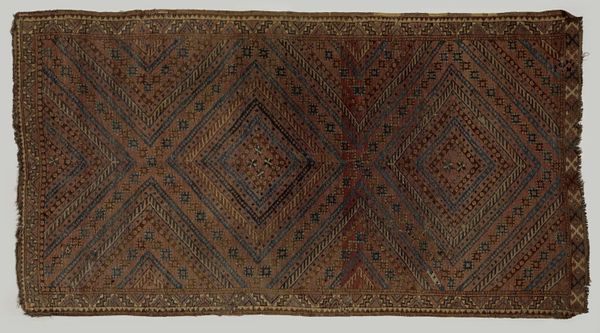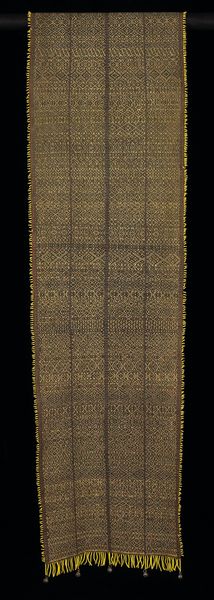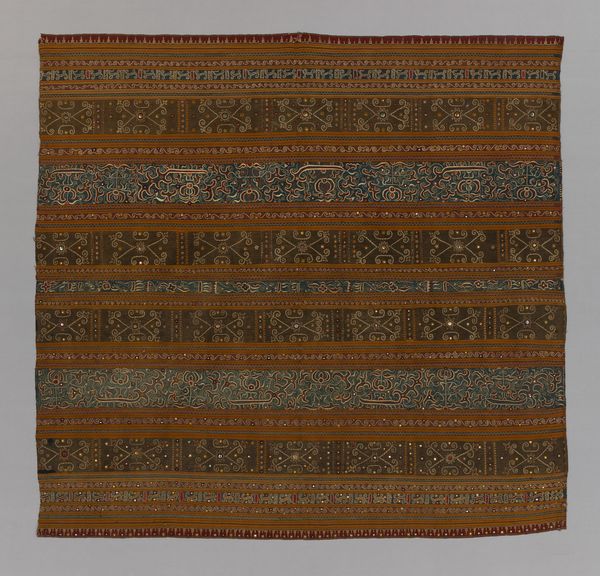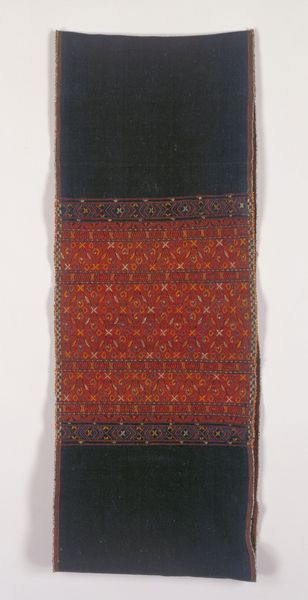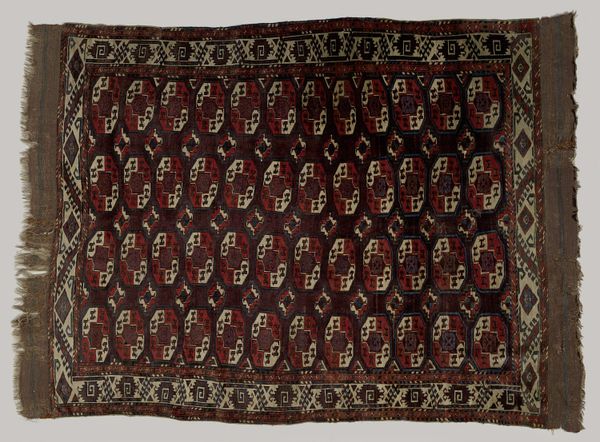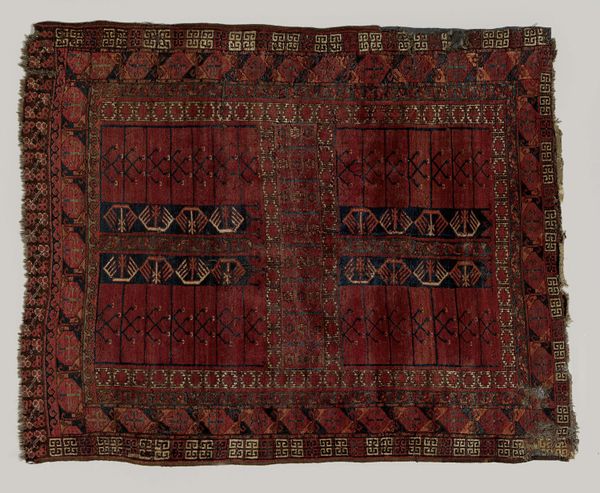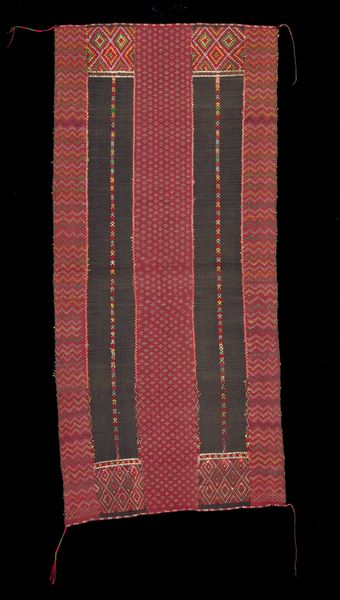
weaving, textile
#
pattern heavy
#
natural stone pattern
#
weaving
#
textile
#
fashion and textile design
#
geometric pattern
#
repetitive shape and pattern
#
geometric
#
repetition of pattern
#
pattern repetition
#
textile design
#
layered pattern
#
combined pattern
Dimensions: 64 3/4 x 16 1/4 in. (164.47 x 41.28 cm) (without tassels)
Copyright: Public Domain
Curator: This is a shoulder cloth, believed to have been created around 1950. The material is cotton and silk, and it’s currently part of the collection at the Minneapolis Institute of Art. Editor: Immediately striking is the sheer density of the woven pattern. It's a marvel of repetitive geometric shapes—it seems someone poured incredible energy and patience into it. Curator: Exactly. These cloths often signified status, part of a complex visual language that communicated the wearer’s position within their community. The act of weaving was a communal undertaking in some regions, an embodiment of collective identity and belonging. Editor: I’m wondering about the origin and processing of these raw materials. Were these silks traded goods? What was the weaver's access to cotton and dye materials at that time, and did such factors determine its color scheme? It looks quite expensive with the materials used to construct it. Curator: A fascinating thought, and one that touches on the political economy of the time. Colonial trade routes undeniably influenced which raw materials were available, impacting regional artistic expression. Cloth making traditions reflect not only artistic skill but access to resources. Editor: It looks a lot like labor-intensive craft to me. How does that kind of repetitive labor shape not only the art, but the lives of the people producing it? And what is its purpose: beauty, function, wealth...? Curator: Considering its creation involved specific sets of aesthetic values which dictated what was considered appropriate or prestigious adds another layer. We cannot isolate it as simply ‘art’ or ‘craft’. Cultural norms of that era shaped not only artistic styles, but its very significance. Editor: It is impressive how something so functional, wearable even, can also stand as such a testament to craftsmanship and societal dynamics. I can get lost just considering the hours and skills involved in producing this cloth. Curator: Ultimately, a piece like this asks us to consider the role of such visual statements and material practices and how cultural objects continue to participate in identity production. A beautiful relic, wouldn’t you say?
Comments
No comments
Be the first to comment and join the conversation on the ultimate creative platform.
